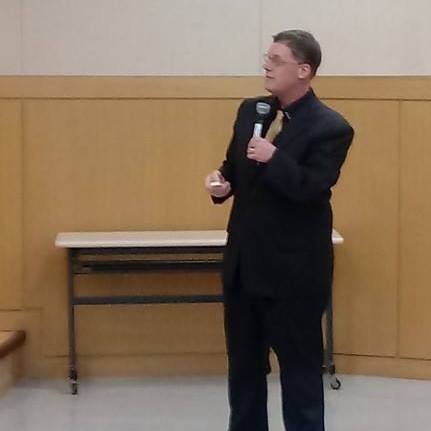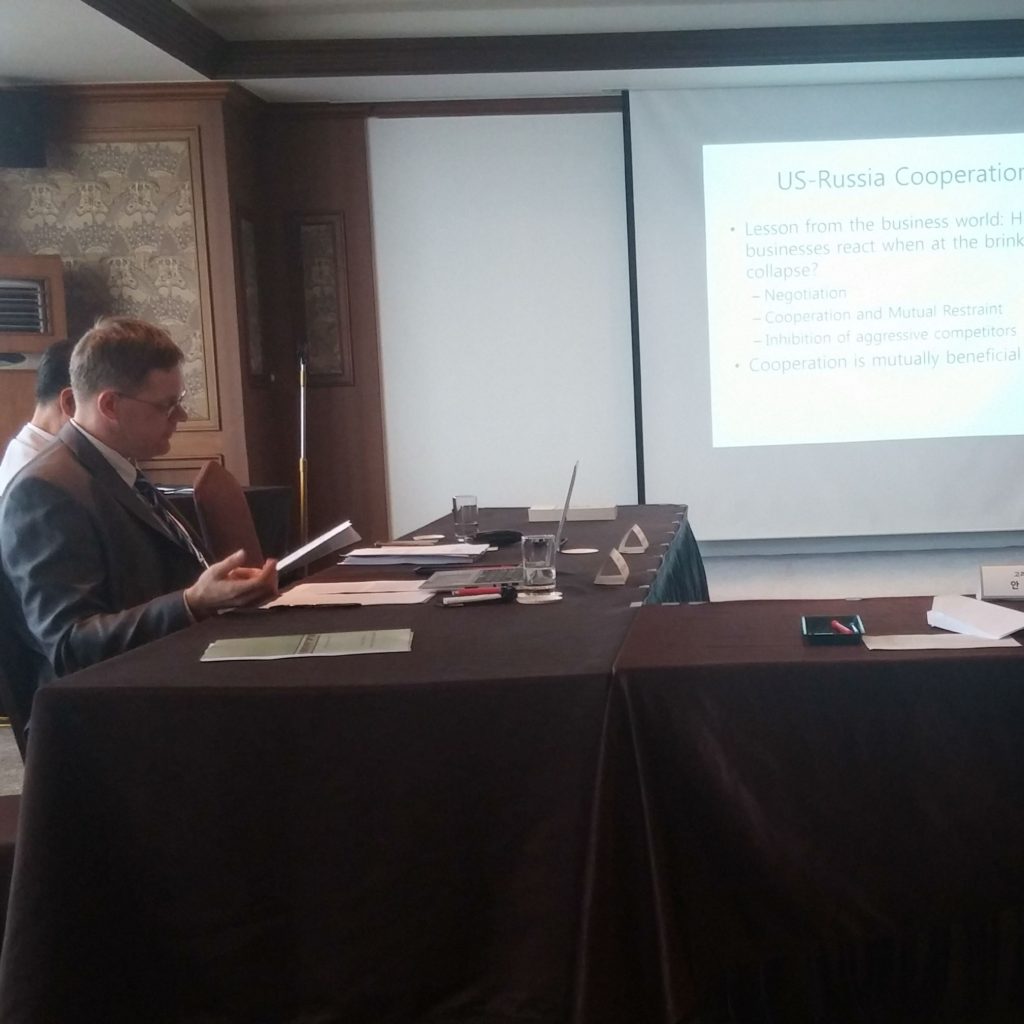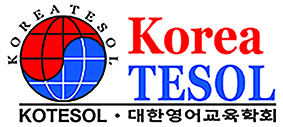Teaching Content Courses in the Students L2
An Interview with Phillip Schrank
When we think of teaching lessons in English in Korea, we immediately think of teaching English as a foreign language (EFL) and, most often, of the instructor being an expat, native speaker of English. However, what has been trending in recent years, especially at the tertiary level, is teaching content courses (e.g., engineering, history, mathematics) in English. To understand better this aspect of teaching, we have sought out Phillip Schrank, a university professor in our Gwangju community, for this interview. — Ed.
KOTESOL: Thank you, Phillip, for making time for this interview. While the main focus of this interview will be your perspectives on teaching content courses in English, it is always helpful for the readers to have some background information – things like where are you from, what did you do there, and what initially brought you to Korea?
Phillip: Thank you for having me! I am originally from Manitowoc, Wisconsin, in the US. I also lived in Milwaukee, Wisconsin, for almost 10 years; and about a year each in Ames, Iowa, and Santa Fe, New Mexico. In the US, I spent most of my time working in financial affairs. I worked through university and graduate school as a teller in a bank. Then after I graduated, I worked as a fiscal officer for a university.
Even though I consider myself a bit introverted, I did not really enjoy working in financial affairs. I missed human contact in my work. Usually, the only human contact I would have was when I would contact people who owed money to the school, which was almost never a pleasant conversation. I left that career and worked as a coffee shop manager for a while before I wanted something new again.
One of my greatest regrets in university was not taking advantage of study abroad opportunities. When I left the coffee shop job, I figured teaching English abroad would be a good way to scratch the itch of living as an expat. I wanted to go somewhere that was very different than America, so Asia seemed like a good choice. At the time, in 2009, Korea was the best option. I contacted a recruiter and quickly went through the process of getting my affairs in order. I think I contacted a recruiter in early to mid-February and on March 16. I was in Gwangju and in front of my students less than a day after I arrived.

KOTESOL: So, while in Korea, you first taught English as a foreign language (EFL) and now content courses in English. Could you give us more detail about these teaching situations?
Phillip: My first jobs in Korea were teaching English to elementary and middle school-aged children at a couple of academies. Later, I was able to get a job at Salesio Elementary School here in Gwangju while I was completing my MA in ESL. Then I moved to Seoul and worked at the Korea Military Academy. At KMA, I taught basic English conversation and reading courses, but was also able to start teaching courses on American politics and some military topics like insurgency and counterinsurgency. This reignited my love of political science and led to me pursuing my PhD in international relations from Korea University.
Now I teach political science at Chosun University and have been there since 2018. I enjoy teaching adults, and political science is such a subject that can prompt interesting and relevant discussions. Current affairs can easily drive discussions, and students are generally engaged in the topics.
KOTESOL: That segues nicely into my next question: What would you consider the benefits to be in teaching content courses – benefits for the instructor as well as benefits for the students?
Phillip: Considering that English is such an important subject here in Korea, I think students learning content courses in English can only be beneficial. That being said, the focus on English education in Korea is on reading and vocabulary. I think that through content courses students can have practice in actually communicating in English through discussions, presentations, and writing papers. I have found that students find it difficult to express their opinions through in-class discussions; so, I usually use our online e-campus to facilitate discussions. By doing so, I can really see the student’s depth of knowledge and interest in the subjects. This is extremely gratifying to me, as the teacher, to see them thinking critically about political science and current political affairs in general – all while communicating in English and expanding their knowledge of English.
KOTESOL: Now, on the flipside, what would you consider to be the drawbacks of teaching content courses to students whose first language is not English – drawbacks from both the student and the instructor perspectives?
Phillip: I think that students can have a difficult time comprehending some of the content. I generally gear my courses toward EFL students, which means it is not at the same level I would teach to native English speakers. But the courses still have challenging content, and I have found the courses can be difficult, even to the few native English speakers I have taught.
But really, I find no drawbacks to teaching content to EFL students. I think that they can learn both content and English at the same time. English-specific courses will give students tools to understand the content courses that are taught in English. Content courses will reinforce those concepts and tools that are taught in English courses.
KOTESOL: To follow up on this, are your students taking EFL courses at the same time that they are taking content courses from you? And if they are, are the courses coordinated in any way, such as an EFL course pre-teaching the vocabulary and jargon that they will encounter in your content course? And if they are not, do you think this “dual approach” would be a beneficial one for your school to institute?
Phillip: Yes, students at Chosun take EFL courses during their freshman and sophomore years. There are also optional EFL courses for them to take. The courses are not coordinated with any content courses though. It is a wonderful idea to try to connect them. The “dual approach” would be very beneficial to both the students and me, as students would come into my classes with an understanding of the vocabulary and concepts we use. It might be a bit difficult to implement, but it is certainly something that is worth looking into.
KOTESOL: How has the Covid pandemic affected your teaching of content courses?
Phillip: How has it not! I think everyone who has taught during the pandemic can agree that their teaching style, student interaction, and even administrative work have changed, sometimes drastically. I can say that I have come to loath Zoom passionately. This semester, we moved back into the classroom, and even though I have students missing class daily because of Covid, I am very happy to be back in the classroom.
I think Covid has taught me to really appreciate my students and the joy and energy I get from being in the classroom. Teaching in front of a computer screen was not only mentally draining – I found it quite depressing.
That being said, it is because of teaching online that I found the usefulness of having online discussions. What used to be a bit of a struggle to get students to discuss difficult topics has now turned into really strong discussions that go back and forth between students. I have finally been able to see how the students really think about these subjects. This is really the only positive thing that I have gotten out of teaching online through Zoom.
KOTESOL: Has emergency remote teaching not allowed you to become familiar with and even proficient with an array of online tools, apps, or platforms that you would not have otherwise learned how to use?
Phillip: I never really branched out into various online tools that I could have used. I simply used Zoom and the e-campus tools that are available to Chosun professors, which proved to be quite adequate. One thing that was nice to learn was video editing. Sometimes I would record lectures for the students, and I would have to edit those videos before posting them. So, yeah, I guess I have learned a little, but certainly not as much as I could have.

KOTESOL: You are a member of Korea TESOL. Would you tell us how you got involved in KOTESOL, your participation in the organization, and what keeps you involved?
Phillip: Yes, I have been a member of KOTESOL since 2013. I am now a lifetime member and will always consider KOTESOL important to me. I started by simply attending the local workshops here in Gwangju, and at one of the first workshops it was announced that The English Connection, the association’s quarterly magazine, needed editors. Wanting to get more involved, I volunteered. To me, KOTESOL was a wonderful way to network with like-minded educators and advance in my new career. I was able to attend numerous local and national conferences, sometimes as a presenter. Volunteering with The English Connection led to larger roles; most notably, I served as the national treasurer and member of the executive council for several years. Today, I stay involved at the chapter level, serving as the treasurer of the local Gwangju-Jeonnam Chapter.
KOTESOL: What occupies your life outside of teaching?
Phillip: Before Covid, my wife and I liked to travel and find good restaurants and coffee shops. Now, we do not get out much. We have not been out of Korea since the summer of 2019, when we went to Taiwan. Otherwise, I spend my time reading and doing research. The focus of my research revolves around military alliances and populism.
KOTESOL: Well, I hope the present Covid situation subsides and allows you to soon get out and about again. Thank you for the interview, Phillip.
Phillip: Yes, thank you so much for inviting me. It is always good to see you.
Epilogue
In Phillip’s case, teaching content courses to his university students seems to work quite well. It must be remembered, however, that the English proficiency of the students must be at a level sufficient to understand the instructor (as Phillip’s students are). In addition, in an ideal situation, the instructor is expert in both the content area in which they are teaching and in teaching EFL (such as in Phillip’s case). In the real world, however, this is often not the situation – instructors are often versed in one of the two areas but not so much in the other.
One content-based instruction (CBI) model that takes this disparity into account is the adjunct model. Students enroll in a regular academic course taught in their second language (L2), and at the same time, enroll in a linked language course, specially designed to complement the academic course. An adaptation of this could be to have a teaching assistant provide regular, non-credit L2 language-support classes to scaffold the content of the academic course taught in the students’ L2.
In conclusion, in teaching content or content-based courses at any level, it is imperative to take into account (a) the students’ L2 proficiency, (b) the instructor’s proficiency in the language of instruction, (c) the instructor’s expertise in the content area, and (d) the degree of need for supplementary EFL scaffolding for the students.
Interviewed by David Shaffer.
Photographs courtesy of Phillip Schrank.
The Interviewer
David Shaffer has been involved in TEFL and teacher training in Gwangju for many years. As vice-president of the Gwangju-Jeonnam Chapter of KOTESOL, he invites you to participate in the chapter’s teacher development workshops (now online) and in KOTESOL activities in general. He is a past president of KOTESOL and is currently the editor-in-chief of the Gwangju News.
Gwangju-Jeonnam KOTESOL Upcoming Events
Check the Chapter’s webpages and Facebook group periodically for updates on chapter events and other online KOTESOL activities.
For full event details:
- Website: http://koreatesol.org/gwangju
- Facebook: Gwangju-Jeonnam KOTESOL



